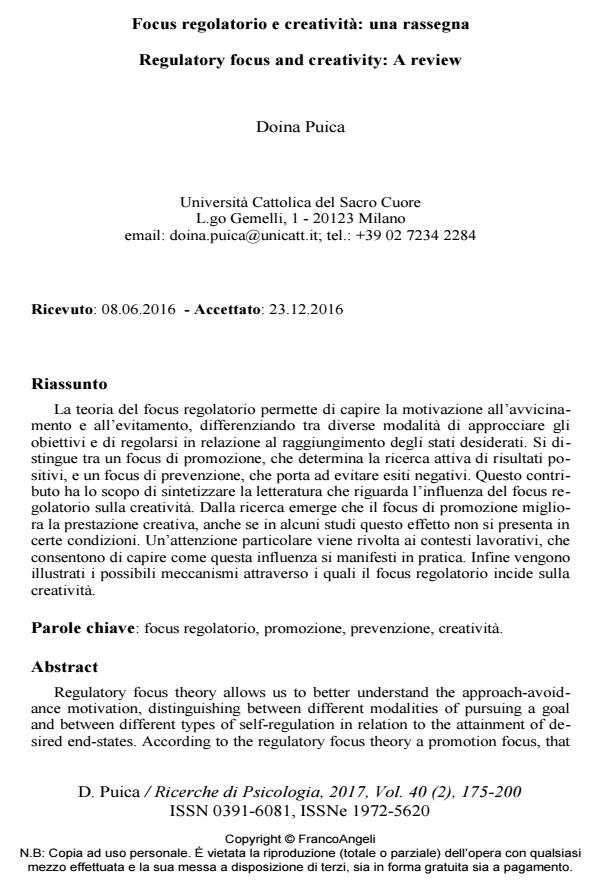Focus regolatorio e creatività: una rassegna
Titolo Rivista RICERCHE DI PSICOLOGIA
Autori/Curatori Doina Puica
Anno di pubblicazione 2017 Fascicolo 2017/2
Lingua Italiano Numero pagine 26 P. 175-200 Dimensione file 250 KB
DOI 10.3280/RIP2017-002002
Il DOI è il codice a barre della proprietà intellettuale: per saperne di più
clicca qui
Qui sotto puoi vedere in anteprima la prima pagina di questo articolo.
Se questo articolo ti interessa, lo puoi acquistare (e scaricare in formato pdf) seguendo le facili indicazioni per acquistare il download credit. Acquista Download Credits per scaricare questo Articolo in formato PDF

FrancoAngeli è membro della Publishers International Linking Association, Inc (PILA)associazione indipendente e non profit per facilitare (attraverso i servizi tecnologici implementati da CrossRef.org) l’accesso degli studiosi ai contenuti digitali nelle pubblicazioni professionali e scientifiche
La teoria del focus regolatorio permette di capire la motivazione all’avvicinamento e all’evitamento, differenziando tra diverse modalità di ap-procciare gli obiettivi e di regolarsi in relazione al raggiungimento degli stati de-siderati. Si distingue tra un focus di promozione, che determina la ricerca attiva di risultati positivi, e un focus di prevenzione, che porta ad evitare esiti negativi. Questo contributo ha lo scopo di sintetizzare la letteratura che riguarda l’influenza del focus regolatorio sulla creatività. Dalla ricerca emerge che il focus di promozione migliora la prestazione creativa, anche se in alcuni studi questo effetto non si presenta in certe condizioni. Un’attenzione particolare viene rivolta ai contesti lavorativi, che consentono di capire come questa influenza si manifesti in pratica. Infine vengono illustrati i possibili meccanismi attraverso i quali il focus regolatorio incide sulla creatività.
Parole chiave:Focus regolatorio, promozione, prevenzione, creatività.
Doina Puica, Focus regolatorio e creatività: una rassegna in "RICERCHE DI PSICOLOGIA " 2/2017, pp 175-200, DOI: 10.3280/RIP2017-002002